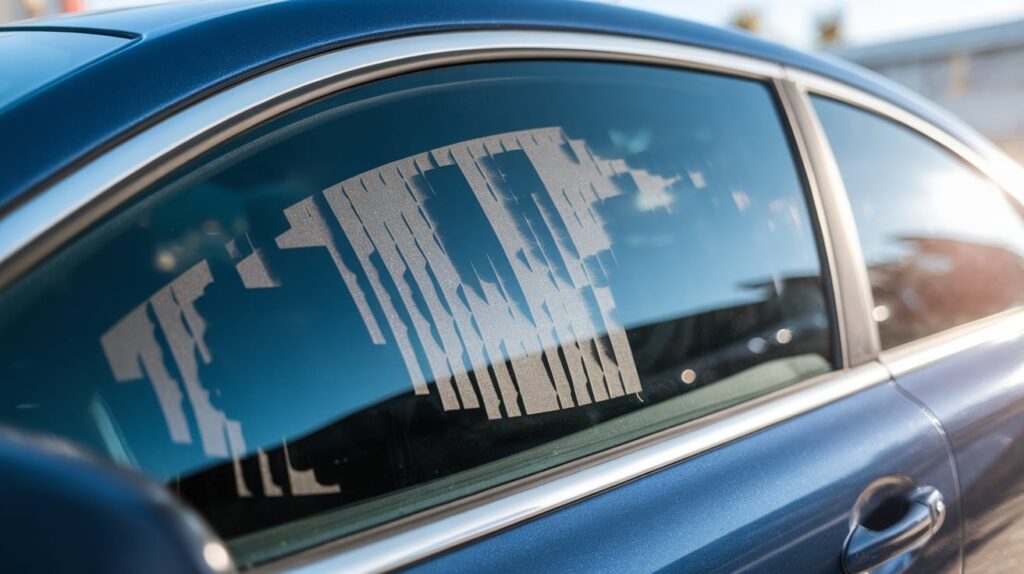You paid for privacy, style, and heat protection, but what you got looks more like a DIY disaster. Bubbling corners, purple haze, and peeling edges are not just ugly; they are warning signs. In Dubai’s harsh sun and tightly regulated traffic laws, a bad tint job can wreck visibility, invite fines, and drag down your car’s resale value. I have seen it firsthand. A friend went for a cheap tint “deal” from someone who “does cars on the side.” Two weeks later, his rear window looked like it was wrapped in plastic, side glass full of bubbles, and he thought it was normal. It is not. Tinting is not just cosmetic; it affects safety, comfort, and legality. A proper job should blend into the glass, not announce itself at every stoplight. Whether you are inspecting your tint or planning to get one done, this guide will walk you through the seven most frustrating and costly bad tint signs every car owner in Dubai should know. Ignore them, and you will be paying twice.
1 | Bubbling or Peeling Film
If your window tint looks like it is trying to escape the glass, you are not overthinking it. Bubbling and peeling are two of the most obvious bad tint signs, and they usually show up when the installer cuts corners or uses film that was never meant to survive Dubai’s heat. Here is what you need to watch for:
- Bubbling | Caused by trapped air between the film and glass. Usually happens when the surface is not cleaned properly or the adhesive is weak.
- Peeling | Starts at the edges or corners when the film lifts due to poor bonding or rushed installation.
- Visibility issues | Bubbles distort your view, especially when sunlight hits them. Peeling exposes bare glass, defeating the purpose of tinting.
- Heat damage | In Dubai’s climate, bubbling worsens quickly. Peeling can lead to full detachment within weeks.
I once saw a Range Rover parked outside a mall in Jumeirah with bubbles so large they looked like blisters. The owner had gone for a “quick deal” from a mobile installer. Two weeks later, the tint was peeling off like old vinyl wrap. That is not just bad luck—it is bad film, bad prep, and bad technique.
Tip: If bubbling shows up within days, do not wait. Go back and demand a fix. A proper installer will not argue—they will replace it. For more insights on why bubbles happen and how to prevent them in the first place, check our detailed guide on Car Tint Bubbling. It covers the common causes, risks of poor installation, and how premium films respond better in Dubai’s heat.
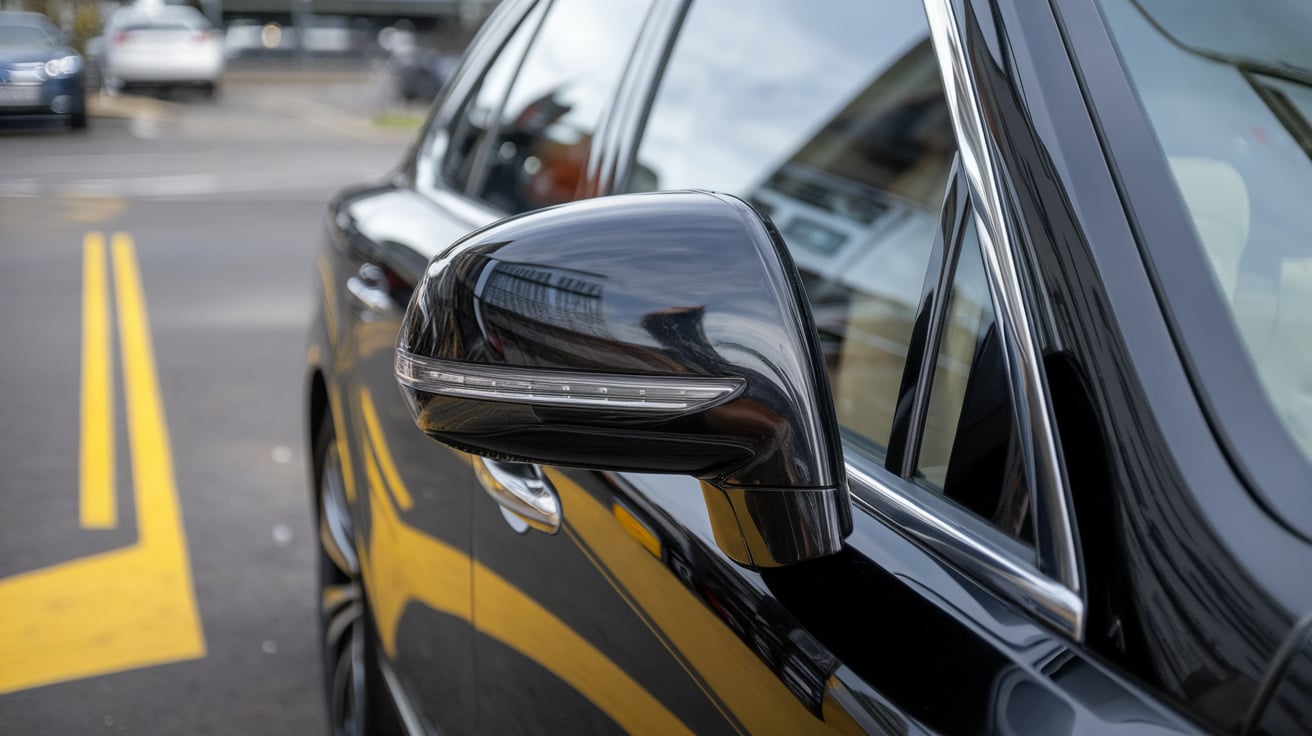
2 | Purple or Faded Tint | A Classic Case of Bad Tint Signs
Ever spotted a car in Dubai with windows that look more violet than black? That’s not a bold style move, it’s one of the most obvious bad tint signs. Purple tint usually means the installer used cheap, dye-based film that breaks down under intense UV exposure. And when tint fades, it’s not just about looks, it’s a sign the film has lost its protective power. Here’s how this particular bad tint sign plays out:
- Purple hue → Caused by unstable dyes reacting to sunlight. It’s one of the earliest bad tint signs you’ll notice.
- Faded or blotchy appearance → The tint looks washed out, especially on rear glass. This means it’s no longer blocking heat or UV rays.
- Rapid discoloration → If your tint starts changing color within months, that’s a clear bad tint sign that the film wasn’t made for Dubai’s climate.
- Interior damage risk → Faded tint lets in more sunlight, which can crack dashboards, fade upholstery, and overheat electronics.
I once inspected a Toyota Land Cruiser in Al Quoz with rear windows so faded they looked like frosted glass. The owner said the tint was “barely six months old.” That’s what happens when you ignore the bad tint signs and go for the cheapest option.
Why purple? Most dye-based films use red, blue, yellow, and green pigments. Yellow and green degrade fastest, leaving behind a bluish-red tint that looks purple.
Bad tint signs like these are more than cosmetic; they’re a warning that your tint is failing. To avoid this, choose ceramic or metalized films that are UV-stable and built for Gulf conditions. Skip anything labeled “dyed polyester,” it’s not made for this heat.
3 | Gaps Around Edges | Sloppy Cutting Is a Bad Tint Sign You Shouldn’t Ignore
Precision matters in tinting, especially in a city like Dubai, where the sun doesn’t forgive sloppy work. If you notice visible glass borders around the edges of your windows, that’s one of the more subtle but telling bad tint signs. It means the installer rushed the job or didn’t measure properly. And in tinting, poor fit equals poor performance. Let’s break down this overlooked bad tint sign:
- Visible gaps → If you can see daylight sneaking in around the edges, the film wasn’t cut to fit. That’s a textbook bad tint sign.
- Light leaks → These gaps let UV rays and heat in, defeating the purpose of tinting entirely.
- Peeling and bubbling → Exposed edges are more likely to lift over time, leading to premature failure—another classic bad tint sign.
- Unprofessional finish → Tint should hug the window edge like a second skin. Anything less screams “cheap job.”
I once inspected a BMW 5 Series in JVC with tint that looked fine from a distance—but up close, every window had a 3mm border of exposed glass. The owner said, “It was done at a discount place.” That’s the cost of ignoring bad tint signs during installation.
Pro tip: High-end installers use computer-cut templates or precision plotters to ensure edge-to-edge coverage. If your tint was cut by hand without proper guides, edge gaps are almost guaranteed.
Bad tint signs like sloppy edges don’t just affect aesthetics, they compromise protection, resale value, and long-term durability. In Dubai’s climate, that’s a risk you don’t want to take.
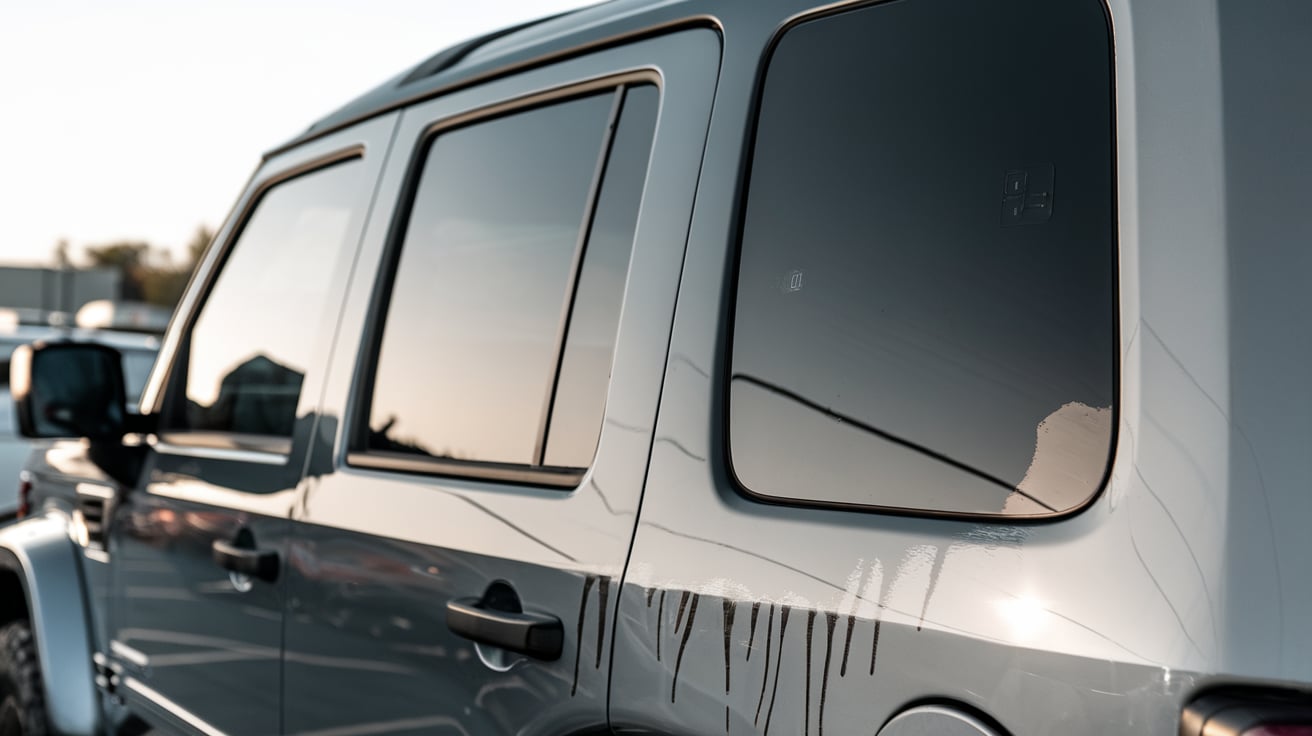
4 | Visible Dust or Debris | Contaminated Tint Jobs Are Bad Tint Signs You Can’t Ignore
Tinting isn’t just about sticking film on glass; it’s a precision craft. And when you see specks of dust, hair, or debris trapped under the film, you’re looking at one of the most frustrating bad tint signs. These imperfections scream poor prep, dirty tools, or a contaminated workspace. In Dubai’s climate, where sunlight magnifies every flaw, this kind of sloppiness is impossible to hide. Here’s how this bad tint sign shows up:
- Dust bubbles or “points” → Tiny particles trapped under the film create raised spots that distort the finish. These are known in the industry as “points” or “dirt bubbles”.
- Air pockets → Contaminants create micro-pockets that expand in heat, leading to bubbling and eventual peeling—another classic bad tint sign.
- Sunlight magnification → In direct sunlight, every flaw becomes a focal point. What looked minor indoors becomes glaringly obvious on Sheikh Zayed Road.
- No fix without redo → Once debris is sealed under the film, it can’t be removed. The only solution is to strip and reapply costly and time-consuming.
I once saw a Range Rover in Dubai Marina with what looked like glitter under the tint. The owner thought it was “just dust.” But those specs were sealed in, and the installer had to redo all five windows. That’s the price of ignoring bad tint signs during prep.
Pro insight: Professionals use lint-free gloves, anti-static sprays, and wet-room techniques to eliminate airborne particles. Tinting in a dusty garage or outdoors? That’s asking for trouble.
Among all bad tint signs, contamination is the one that screams carelessness. It’s not just about aesthetics, it’s about respect for the craft. If your installer doesn’t treat tinting like surgery, you’ll end up with a finish that looks and performs like a hack job.
5 | Scratches or Creases: Permanent Damage That Screams Bad Tint Signs
Tint film is delicate—like applying a second skin to your car’s glass. Mishandling it during installation leads to irreversible flaws that instantly downgrade your vehicle’s appearance. Scratches and creases aren’t just cosmetic issues; they’re some of the most unforgiving bad tint signs you’ll ever encounter. Here’s how this bad tint sign shows up:
- Scratches → Caused by dirty squeegees, rough tools, or dragging the film across debris. These marks distort visibility and create a cloudy, uneven finish.
- Creases → Formed when the film is folded, stretched, or repositioned improperly. Once creased, the film can’t be smoothed out; it’s permanently damaged.
- Distorted optics → Scratches and creases scatter light, making windows look hazy or warped. In Dubai’s harsh sunlight, these bad tint signs become painfully obvious.
- No recovery → Unlike bubbles or edge gaps, these flaws can’t be fixed. The only solution is to strip and reapply the film costly and time-consuming.
I once reviewed a Lexus IS in Downtown Dubai with front windows that looked like they’d been wiped with sandpaper. The owner said, “It was done in a hurry.” That’s what happens when installers ignore the basics and leave behind permanent bad tint signs.
Industry insight: Scratches are classified as major defects when they exceed 10mm and are visible at arm’s length. In tinting, even smaller marks can ruin the entire job.
Among all bad tint signs, scratches and creases are the most unforgiving. They speak volumes about the installer’s skill or lack thereof. If you spot these flaws right after installation, don’t settle. A professional tint job should be flawless, not full of imperfections.
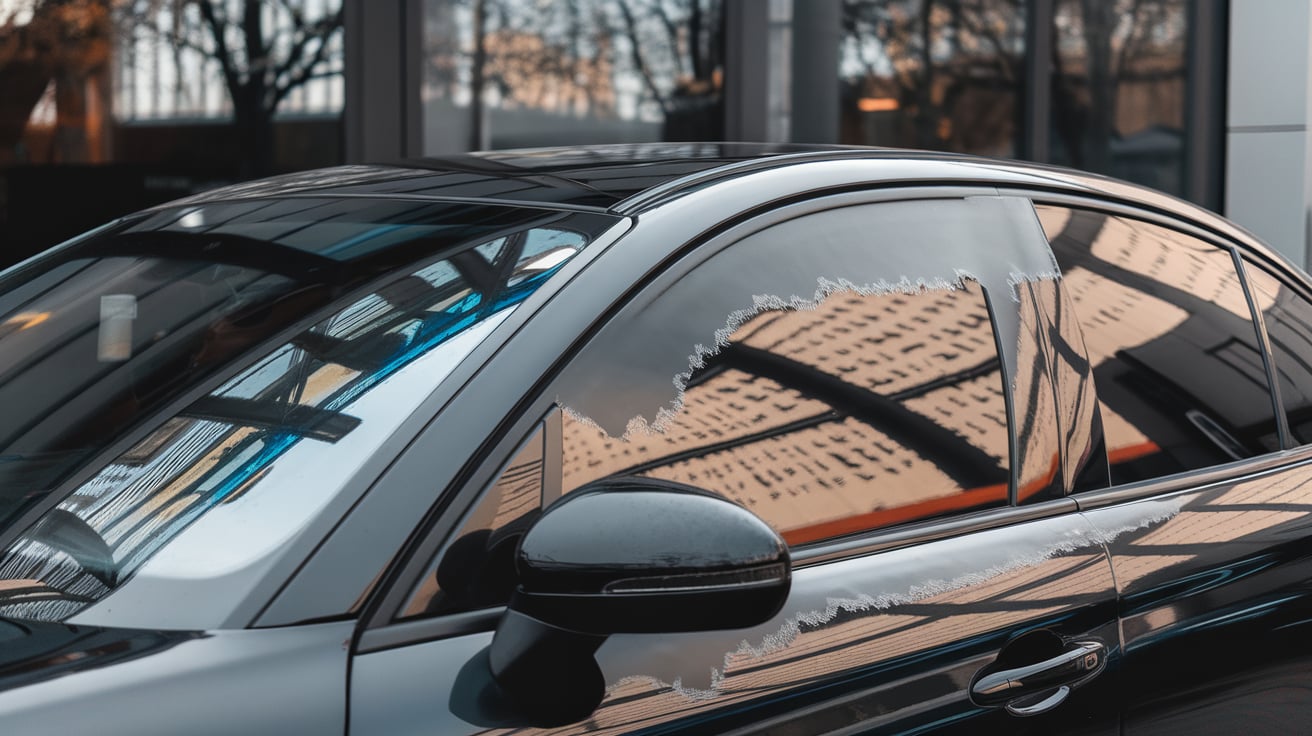
6 | Distorted Visibility: Warped Views and Nighttime Hazards Are Bad Tint Signs You Can’t Overlook
Tint should enhance your driving experience, not turn it into a hazard. If your view through the windows feels warped, blurry, or uneven, you’re dealing with one of the most dangerous bad tint signs. Distortion often results from low-grade film, poor heat shrinking, or improper application. And in Dubai, where night driving already comes with visibility challenges, this flaw can be downright risky. Here’s how this bad tint sign affects you:
- Warped optics → Cheap or poorly installed film can bend light unevenly, making your view look wavy or distorted.
- Blurry vision at night → Distortion worsens in low light, interfering with depth perception and reaction time—especially dangerous when spotting pedestrians or cyclists.
- Cloudy or uneven finish → This visual noise can cause eye strain and reduce your confidence behind the wheel.
- Safety risk → According to the Federal Highway Administration, 76% of pedestrian fatalities occur at night. Distorted visibility from bad tint only increases that risk.
I once rode in a Camry with aftermarket tint that made streetlights look like smeared halos. The driver said, “It’s just the film.” But that kind of distortion is a serious bad tint sign and a safety liability.
Real-world impact: Studies show that poor nighttime visibility contributes to higher crash rates, especially in urban intersections. Tint that distorts your view only adds to the danger.
Among all bad tint signs, this one hits hardest. It’s not just about aesthetics, it’s about safety. If you notice warped views or blurry optics, demand a redo or refund. Your life and others’ may depend on it.
7 | Mismatched Tint Shades | Patchwork Tinting Is a Bad Tint Sign That Hurts Your Car’s Identity
Uniformity is everything in tinting. When your windows show different shades or levels of darkness, it’s not just a minor flaw; it’s one of the most overlooked bad tint signs. Mismatched tint usually happens when installers use different film batches, tint windows at separate times, or fail to account for factory glass tint. The result? A patchwork effect that looks unprofessional and cheap. Here’s how this bad tint sign shows up:
- Inconsistent shades → Front windows look darker than rear ones, or side windows don’t match the windshield strip. That’s a clear bad tint sign.
- Batch variation → Even the same brand of film can vary slightly between rolls. If installers don’t use film from the same batch, you’ll see it.
- Legal vs. aesthetic mismatch → While Dubai’s tint laws allow different VLTs (Visible Light Transmission) for front and rear windows, a good installer blends them for a cohesive look. If not, it’s another bad tint sign.
- Resale impact → Buyers notice mismatched tint. It signals poor workmanship and can lower perceived value, especially in premium segments.
I once inspected a Mercedes GLE in Business Bay where the rear windows looked charcoal black, but the front ones had a greenish hue. The owner said, “They used the same film.” Turns out, the front tint was applied three months later from a different roll. That’s how subtly bad tint signs creep in.
Expert tip: High-end installers log batch numbers and use spectrophotometers to ensure uniformity. If your tint shop doesn’t track this, mismatches are inevitable.
Among all bad tint signs, this one is often dismissed, but it’s a major aesthetic flaw. Your car’s tint should feel intentional, not accidental. If it looks like a patchwork job, it probably is.
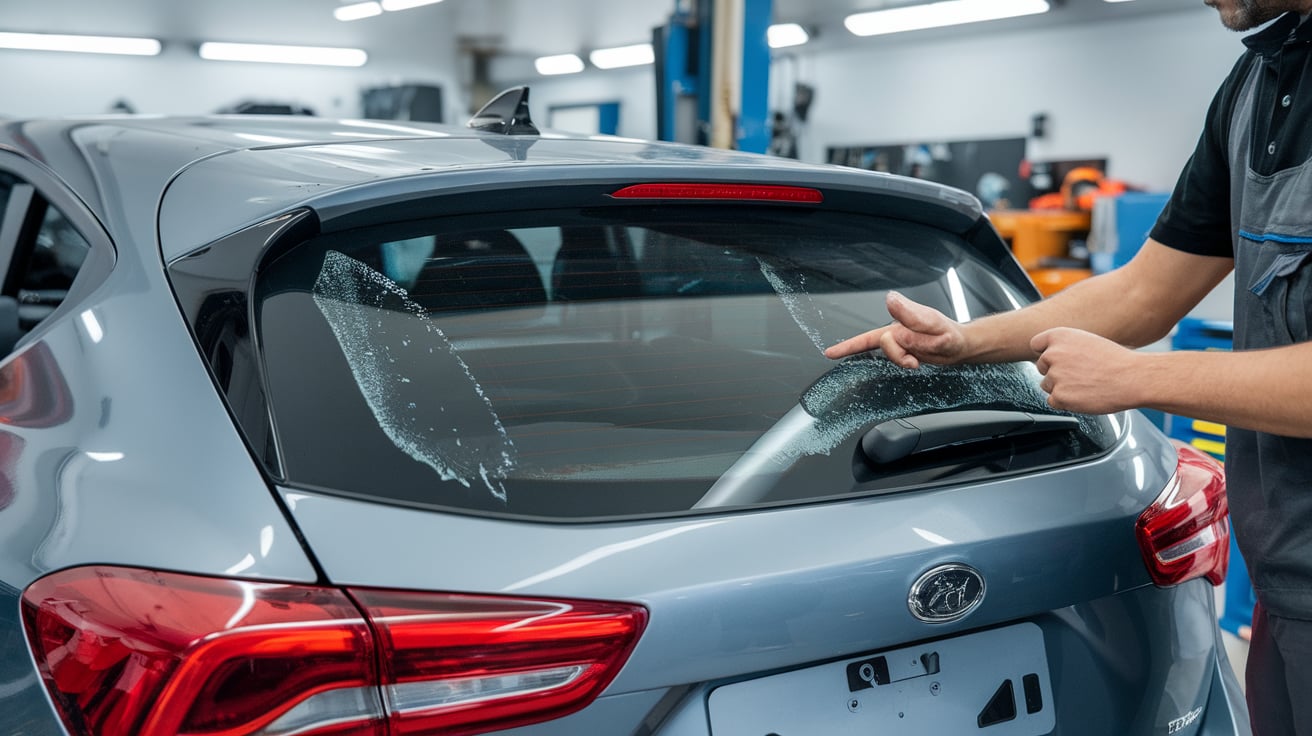
The Importance of Professional Tinting | Avoiding Bad Tint Signs Before They Start
DIY tint kits might seem tempting, especially with YouTube tutorials promising pro-level results. But in reality, most DIY jobs end up riddled with bad tint signs like bubbling, dust contamination, uneven cuts, and mismatched shades. Professional tinting isn’t just about aesthetics, it’s about durability, safety, and compliance. Here’s why skipping the DIY route helps you avoid bad tint signs:
- Controlled environment → Certified shops tint in dust-free, temperature-controlled bays. This eliminates airborne particles and prevents contamination, one of the most common bad tint signs.
- Precision tools → Professionals use plotters, heat guns, and edge trimmers to ensure flawless application. DIY kits often rely on scissors and hope.
- Legal compliance → In Dubai, tint laws vary by window type. Certified installers know the regulations and help you avoid illegal VLT levels, another overlooked bad tint sign.
- Warranty-backed work → Reputable shops offer warranties that cover bubbling, peeling, and fading. DIY kits? You’re on your own when bad tint signs show up.
I once consulted on a Hyundai Tucson in Dubai Silicon Oasis, where the owner used a $100 DIY kit. Within weeks, the rear windows bubbled, the front ones faded to purple, and the windshield strip had visible dust specks. He ended up paying triple to have it professionally redone.
Professional tinting shields you from harmful UV rays and keeps your cabin cooler. Don’t wait for damage to show, book your car window tinting service in Dubai today and drive with confidence.
Pro Tips for Choosing a Reputable Tint Installer: Your First Defense Against Bad Tint Signs
Avoiding bad tint signs starts long before the film touches your glass—it begins with choosing the right installer. In Dubai’s competitive tinting market, where every shop claims to be the best, you need to know how to separate the pros from the posers. Here’s how to vet your installer and protect your car from bubbling, fading, and other costly bad tint signs.
1. Check Certifications
Look for installers certified by trusted organizations like the International Window Film Association (IWFA) or trained by brands like 3M, Llumar, or SunTek. Certification means they’ve mastered proper techniques, legal compliance, and film handling—key to avoiding bad tint signs like creases, edge gaps, and distortion.
2. Ask About Film Warranties
Reputable shops offer warranties on both labor and film. This protects you from bad tint signs like peeling, fading, and bubbling. If the shop won’t back their work, walk away.
3. Read Customer Reviews
Online reviews reveal real-world experiences. Look for consistent praise about cleanliness, professionalism, and long-term results. If you see complaints about dust bubbles or mismatched shades, those are red flags, classic bad tint signs in disguise.
4. Inspect Their Workspace
A clean, dust-free environment is essential for quality tinting. If the shop looks cluttered, chaotic, or they’re tinting outdoors, expect contamination, one of the most common bad tint signs.
5. Request Film Samples
Touch and compare different film types. High-quality films feel thicker and more durable. Cheap ones feel flimsy and fade faster, leading to a purple tint and poor heat rejection, both unmistakable bad tint signs.
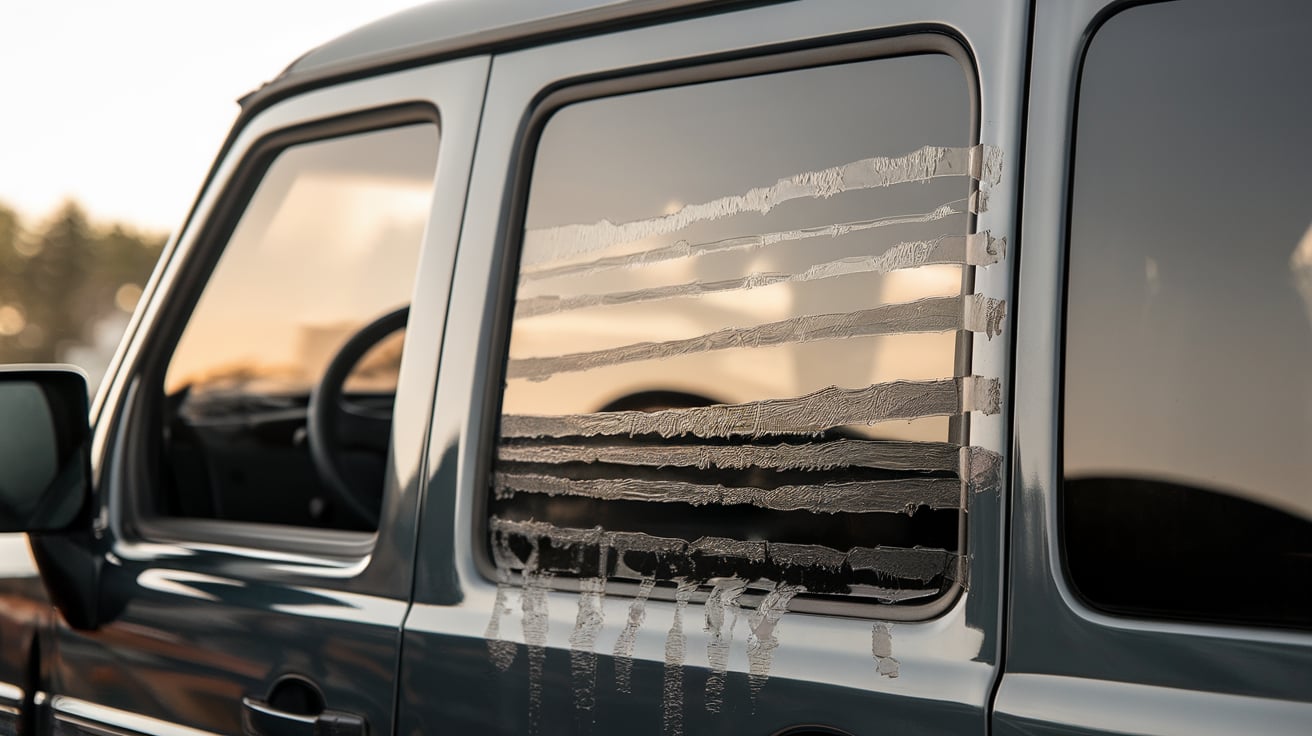
Don’t Let a Bad Tint Job Ruin Your Ride
Tinted windows should elevate your car, not drag it down. But when bad tint signs like bubbling, fading, edge gaps, or distortion start showing up, your investment takes a hit. These flaws aren’t just cosmetic; they affect visibility, safety, and resale value.
By learning to spot bad tint signs early, you protect your vehicle from long-term damage and costly rework. Whether you’re upgrading your daily driver or detailing a show car in Dubai, don’t settle for less. Demand precision, quality, and consistency from your installer, and your windows will thank you for years to come.
For the best results, upgrade to 3M Window Tint Film in Dubai, a premium option that delivers unmatched heat rejection, UV protection, and long-lasting clarity. Book your service today and enjoy cooler, safer, and more stylish drives across the UAE.
Final tip: If you see any bad tint signs, even subtle ones, don’t wait. Get a second opinion, ask for a warranty fix, or redo the job with a certified professional. Your car deserves better.

